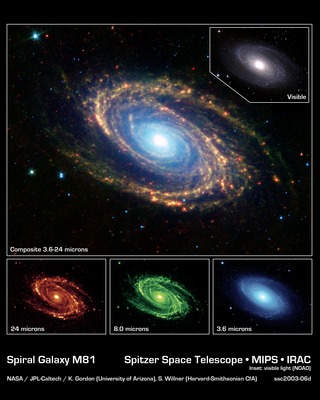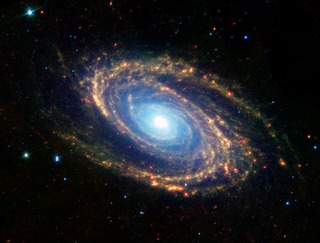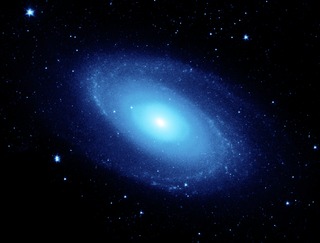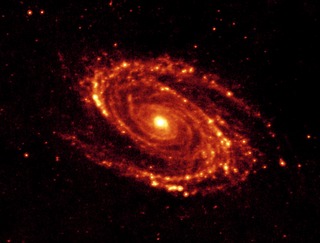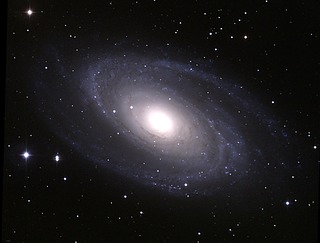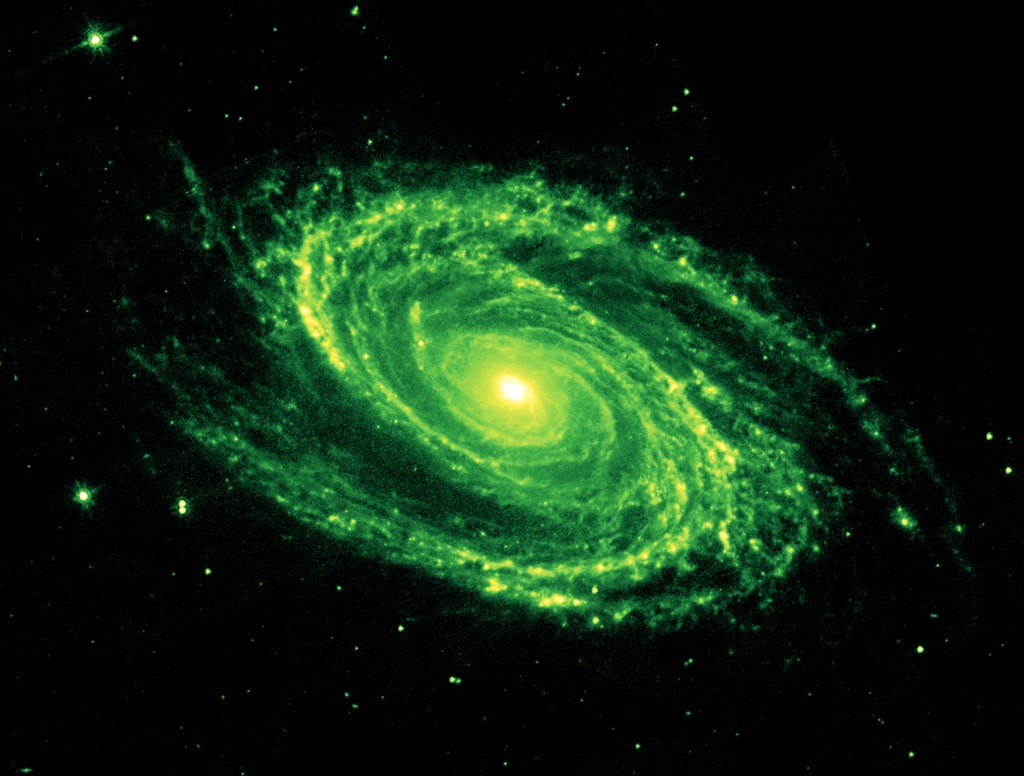
Credit: NASA/JPL-Caltech/K. Gordon (University of Arizona) & S. Willner (Harvard-Smithsonian Center for Astrophysics)
Observation • December 18th, 2003 • ssc2003-06d4
ssc2003-06d4
The magnificent spiral arms of the nearby galaxy Messier 81 are highlighted in this image from NASA's Spitzer Space Telescope. Located in the northern constellation of Ursa Major (which also includes the Big Dipper), this galaxy is easily visible through binoculars or a small telescope. M81 is located at a distance of 12 million light-years.
In this 8-micron image, emission is dominated by infrared light radiated by hot dust that has been heated by nearby luminous stars. Dust in the galaxy is bathed by ultraviolet and visible light from nearby stars. Upon absorbing an ultraviolet or visible-light photon, a dust grain is heated and re-emits the energy at longer infrared wavelengths. The dust particles are composed of silicates (chemically similar to beach sand), carbonaceous grains and polycyclic aromatic hydrocarbons and trace the gas distribution in the galaxy. The well-mixed gas (which is best detected at radio wavelengths) and dust provide a reservoir of raw materials for future star formation.
About the Object
- Name
- Bode's Galaxy • Messier 81 • M81 • NGC 3031 • UGC 5318
- Type
- Galaxy > Type > Spiral
- Distance
- 12,000,000 Light Years
- Redshift
- -0.000113
Color Mapping
| Band | Wavelength | Telescope |
| Infrared | 3.6 µm | Spitzer IRAC |
| Infrared | 4.5 µm | Spitzer IRAC |
| Infrared | 5.8 µm | Spitzer IRAC |
| Infrared | 8.0 µm | Spitzer IRAC |
| Infrared | 24.0 µm | Spitzer MIPS |
Astrometrics
- Position (J2000)
- RA =9h 55m 34.0s
- Dec = 69° 3' 54.9"
- Field of View
- 23.5 x 17.9 arcminutes
- Orientation
- North is 268.7° left of vertical
